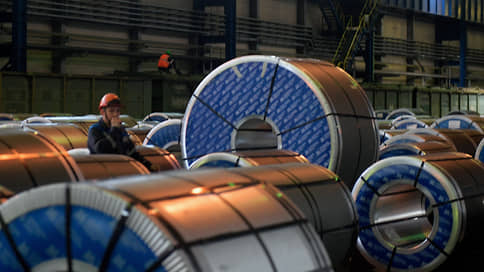The Ministry of Finance considered the tax burden on metallurgists too low
[ad_1]

The Ministry of Finance again put forward the thesis about low investments and high dividends in companies of the mining and metallurgical complex. According to the ministry, the industry, unlike the oil industry, has a low tax burden, and the introduction of exchange rates makes it only slightly fair. The Ministry of Finance announced an adjustment to the excise tax on steel, but, according to experts, a return to the discussion of the dividend tax, which was discussed in 2021 but was postponed, is not ruled out.
Over the past ten years, the operating cash flow of the largest companies in the Russian mining and metallurgical complex (MMC) amounted to 25 trillion rubles. with investments for the same period of 8.5 trillion rubles, writes the Ministry of Finance in published September 28 “Main directions of budget, tax and customs tariff policies for 2024 and for the planning period 2025–2026.” The return on invested capital of metallurgists is 200%, while for the oil industry it reaches 90%. Without rent taxes, this figure would be 230% in the mining and metals sector and 350% in the oil industry.
According to the Ministry of Finance, the remaining free cash flow after paying taxes and financing capital investments of the MMC company is distributed among shareholders. The high profitability in the mining and metals industry is explained by the rental nature. Historically, as follows from the document, metallurgists had a low tax burden. According to the ministry’s calculations, it takes up at least 5% of free cash flow before the fiscal section (EBITDA minus rental taxes after financing capital investments). The same figure in the oil industry is 70%.
At the moment, the share of rent redistribution in metallurgy remains low, although, as the Ministry of Finance writes, the introduction of exchange rates “will contribute to some improvement in the fairness of the distribution of rental income in these industries.”
The Ministry of Finance is tightening its rhetoric, says a source in the mining and metallurgical company. According to him, over the past three years, the metallurgy industry has already faced an increase in the fiscal burden six times: an increase in the mineral extraction tax on iron ore, export duties of 15%, a repeated increase in the mineral extraction tax on iron ore, an excise tax on steel, a tax on “excess profits”, and an exchange rate export duty. Additional adjustments to the excise tax on steel have been announced for 2024. This policy neutralizes the investment potential of a business. Another source said the dividends received by shareholders are returned to the country’s economy as investments in a variety of industries.
The published document states that the Ministry of Finance is thinking about adjusting the calculation of the excise tax on steel against the backdrop of the high profitability of exports of semi-finished products. According to the ministry, in the first half of the year it was 37%, which is significantly higher than the 2022 level (12%). The increase in profitability is facilitated by higher prices for semi-finished steel products: the average slab price in July-December 2022 was $442 per ton, and in the first half of 2023 – $562. The thesis about restoring the cost of a slab to $562 is outdated, notes Kommersant’s interlocutor. In August, according to the FAS, the price fell again to $439.3. Next year, the slab will be prohibited from being supplied to premium EU markets, which will further reduce the price.
Another interlocutor recalls that excise duty is paid on all liquid steel, including from the domestic market, where prices are no longer related to the rise in world quotations.
“The external irrelevant indicative is being extended to the entire industry,” a Kommersant interlocutor comments on the position of the Ministry of Finance. “At the same time, profitable supplies of slab abroad, which the Ministry of Finance refers to, are available only to one company – NLMK, which, being a non-sanctioned company, can temporarily export the slab to European markets. But for Lipetsk this is a temporary opportunity that will soon be unavailable.” Metallurgical companies did not give official comments.
The updated figures show that, in the opinion of the Ministry of Finance, the goal of a more equitable distribution of rent has not been achieved, says independent expert Boris Lutset. It was planned that an average of 15–20% of income would be withdrawn through taxes, but in reality it turned out to be only 12%. If in 2021 these calculations were used to justify an increase in the mineral extraction tax, now – export duties.
According to the expert, comparisons with the oil industry are easy to make: there the share of state participation is much higher, the tax system is more complex, and the issue of paying dividends is not so pressing.
In addition, a whole series of tightening of the tax regime has been implemented there and, according to the Ministry of Finance itself, the limit for increasing fiscal withdrawals has been reached. The “dividend” argument in the mining and metals industry, says Mr. Lutset, plays a completely different role: in comparison with 2021, the Ministry of Finance doubled the estimate of free cash flow in the industry over ten years – from 8 trillion to 16 trillion rubles. In this regard, he believes that, among other things, a return to the idea of differentiating the tax burden depending on the ratio of investments and dividends, the consideration of which was postponed in 2021, cannot be ruled out in the very near future.
[ad_2]
Source link





